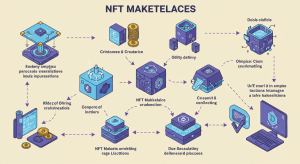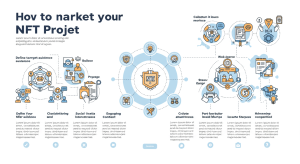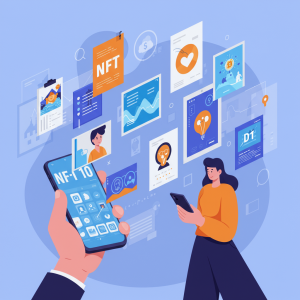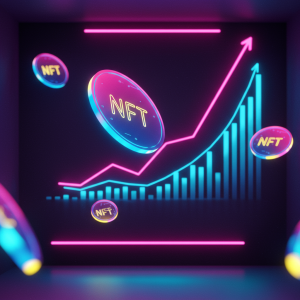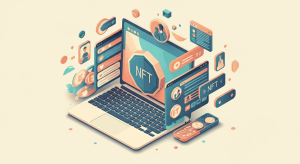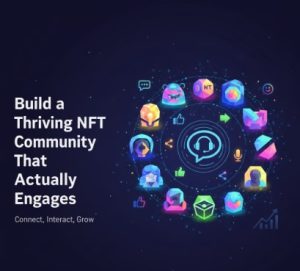Why Are NFTs So Expensive?
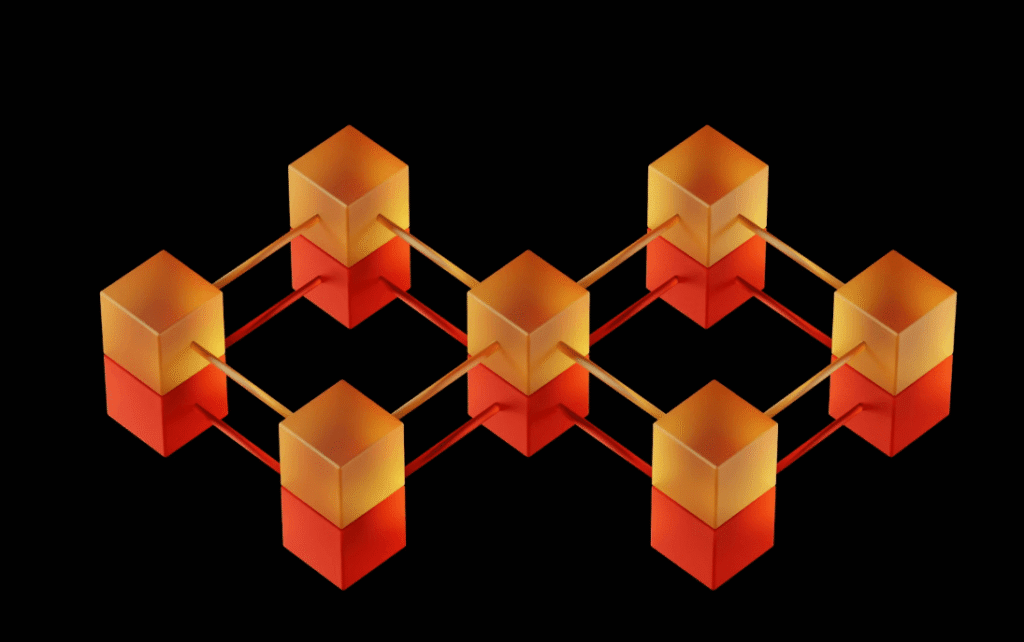
NFTs, or non-fungible tokens, have taken the world by storm over the past few years, generating jaw-dropping headlines like “$69 million for a digital artwork” and “A tweet sells for $2.9 million.” At first glance, it’s natural to ask, “Why are NFTs so expensive?” How can something digital—that anyone can technically view or download for free online—command such high prices?
This blog explores the factors driving the high costs of NFTs, from their uniqueness and utility to cultural significance and market trends. By the end, you’ll have a clear understanding of what gives NFTs their value and why the market for them is so dynamic.
What Are NFTs?
Before we dig into their price tags, it’s important to understand what NFTs are. NFT stands for “non-fungible token,” a unique digital asset stored on a blockchain. Unlike cryptocurrencies like Bitcoin or Ethereum, which are “fungible” and interchangeable (one Bitcoin is equal in value to another), NFTs are one-of-a-kind. They often represent digital art, music, virtual goods for video games, tweets, or other forms of creative or collectible content.
NFTs use blockchain technology to authenticate ownership and verify their uniqueness. Think of it as a certificate of authenticity for a digital item.
Now that we know what NFTs are, let’s unpack the reasons behind their high costs.
What Makes NFTs Expensive?
1. Uniqueness and Scarcity
At the core of NFT pricing is the principle of scarcity. Just like a rare baseball card or limited-edition sneakers, NFTs often derive their value from their limited supply. When something is perceived as unique or rare, it naturally attracts higher bids from collectors or enthusiasts.
For example, Beeple’s digital artwork Everydays: The First 5000 Days sold for $69 million at a Christie’s auction because of its unmatched originality and the artist’s status in the digital art community. This artwork wasn’t just a JPEG you could find anywhere; it was a certified, blockchain-backed, one-of-a-kind creation.
Additionally, many NFT creators intentionally produce limited “runs” or “editions,” similar to how artists release limited prints of their work. The fewer the editions, the rarer the NFT and, generally, the higher its price.
2. Utility and Functionality
NFTs aren’t just digital collectibles; they often have utility, adding a functional layer to their value. Some NFTs grant their owners access to exclusive events, content, or perks within a specific ecosystem. For instance:
-
Bored Ape Yacht Club (BAYC): Owners of these NFTs gain access to an exclusive community, events, and even future NFT drops. Essentially, owning a Bored Ape NFT is akin to having a digital membership to an influential club.
-
Gaming NFTs: Many NFTs in gaming carry in-game utility. For example, Axie Infinity’s NFTs function as characters or items players need to participate in the game. Their value stems from their in-game importance as well as their tradability in the marketplace.
The combination of digital ownership and real-world (or virtual-world) utility amplifies NFT prices significantly.
3. Cultural and Historical Significance
The cultural value of an NFT often plays a huge role in its pricing. Some NFTs are seen as symbols of innovation, cultural commentary, or moments in history. For instance:
-
Jack Dorsey’s Tweet: Twitter founder Jack Dorsey sold his first-ever tweet as an NFT for $2.9 million. While the tweet may seem ordinary, its purchase signified the ownership of an iconic moment in the history of social media.
-
CryptoPunks: These pixelated characters, one of the earliest examples of NFTs, are culturally significant as they represent the birth of NFTs. Their prices reflect their status as trailblazers in the NFT ecosystem.
4. The Role of Speculation and Hype
The NFT market is heavily influenced by speculation. Just as certain tech stocks rise to astronomical prices based on future potential rather than their current value, NFT buyers often invest in the hope that their assets will appreciate over time. This speculative nature can drive prices sky-high, especially when FOMO (fear of missing out) enters the mix.
For example, the success and price hikes of early NFT projects like CryptoKitties and CryptoPunks created a domino effect, leading collectors to bet on the next “big thing.” Even projects that initially seem trivial, like cartoon-inspired NFTs, can suddenly fetch millions if they gain cultural or viral momentum.
5. Blockchain Technology and Authenticity
The blockchain technology underpinning NFTs also adds to their expense. Many NFTs exist on the Ethereum blockchain, renowned for its security and functionality. This blockchain provides an irrefutable ledger of authenticity and ownership, preventing counterfeiting and authenticating the originality of digital items.
The value of this trust and authenticity cannot be understated, particularly in a world where fake goods are often abundant. For collectors, knowing that their NFT is both original and part of an immutable digital record justifies its price.
6. Influencer and Celebrity Endorsements
It’s no secret that influencers and celebrities can wildly inflate the value of an NFT project. When high-profile figures like Snoop Dogg, Elon Musk, or Grimes advocate for or participate in NFT projects, their association often adds immense desirability and perceived value.
For instance:
-
Kings of Leon sold their NFT album for over $2 million.
-
Digital artist Beeple became a household name when celebrities started bidding on his digital art pieces.
Endorsements like these lend social proof, which leads to higher interest and, in turn, higher costs.
7. The Status Symbol Effect
Owning certain NFTs has become a status symbol, much like wearing a Rolex or driving a luxury car. The rarity and exclusivity of many NFTs make them aspirational items for individuals looking to signal their wealth or creative taste in the digital age.
For instance, high-value collections like Bored Ape Yacht Club are often flaunted as profile pictures on social media platforms like Twitter. The signal is clear: “I’m part of an elite club.”
NFTs straddle the line between digital art, investment, and from a sociological perspective, identity.
8. The Cost of Creation and Transaction Fees
Creating and trading NFTs isn’t free, and these costs often trickle into their sale prices. “Minting” an NFT (the process of recording it on the blockchain) often incurs high gas fees, especially on Ethereum, where fees can spike during periods of heavy blockchain activity. Higher costs to mint can lead to higher costs for buyers later.
Additionally, royalties for artists are often built into NFTs, meaning creators earn a percentage of sales whenever their NFT changes hands. While this is great for creators, it adds another layer to buyers’ costs.
Are NFTs Worth Their Price Tag?
It depends. Just like art, collectibles, or luxury goods, the value of NFTs varies depending on personal perception, market demand, and cultural significance. For some buyers, the emotional or symbolic meaning of owning a certain NFT holds incredible value. For others, NFTs are a financial investment aimed at future gains.
That said, the NFT space is still evolving. Critics point to the volatility of the market and environmental concerns over blockchain technologies, which could impact prices and sustainability long term. But for now, NFTs continue to command attention, intrigue, and sky-high price tags.
Where Do NFTs Go From Here?
NFTs aren’t just a fad; they’re a technological revolution reshaping how we think about art, ownership, and value in the digital world. While their future pricing trends remain uncertain, one thing is clear: NFTs are challenging traditional models of ownership and paving the way for new forms of cultural, artistic, and financial expression.
If you’ve been curious about NFTs, consider exploring smaller, more affordable options to start with. Who knows? You might just find yourself owning a piece of the internet’s future history.

